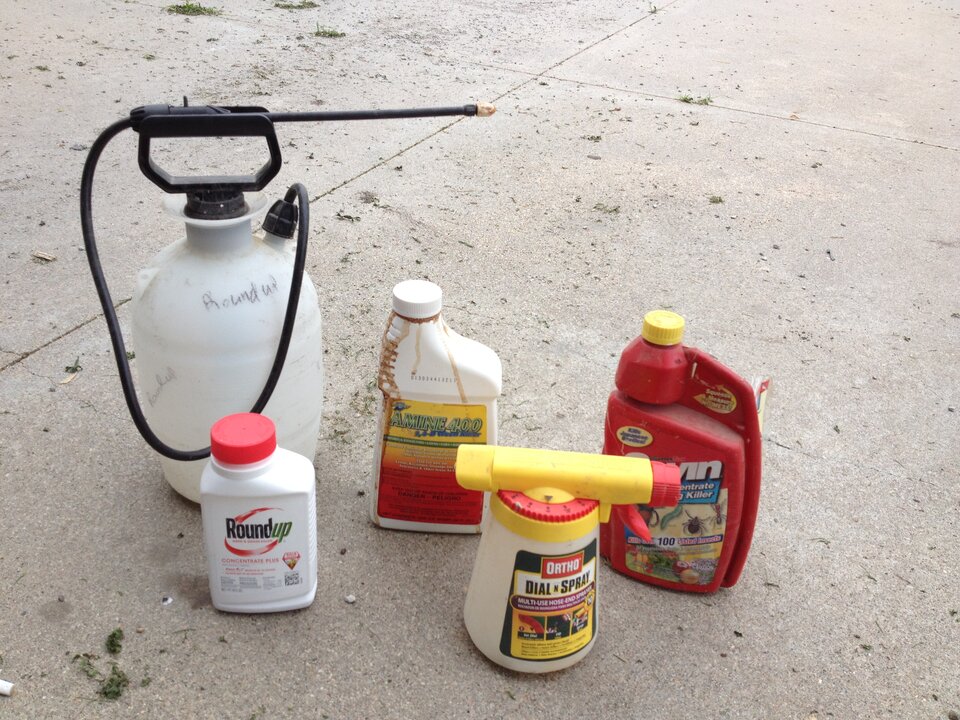Know Your Pesticide

Spring is coming. And with the onset of warm weather and more spring rains, comes many different lawn weeds. Each year we tend to find new herbicides in the garden center of our favorite stores. However, when dealing with pesticides, it is very important to know what you are purchasing and how to correctly use it so as to not harm the environment, pollinators, and beneficial plants. Though it’s a little hard to do, it’s super important to take the time to open and read the product label. It’s a lot like baking a cake – if you don’t read the recipe, it will probably turn out to be inedible and maybe make you sick. The pesticide label is the same; the information on the label tells us where it can and can’t be used, what kind of protective equipment to wear, how much of the product to put in the spray tank or in the lawn spreader and any other limitations that are pertinent.
One of the things we all need to remember when using pesticides is to use the right product for the job and to know what you are using. To use the trade name Roundup isn’t going to be enough anymore. There are a lot of new Roundup brand products that each have a different combination of chemicals.
Roundup 365 is a new product from Scotts that contains both glyphosate, which is the active ingredient in the general Roundup product, as well as Imazapic. Imazapic is a selective herbicide used to control annual and perennial grasses as well as some broadleaf weeds. It has a trait that allows it to last longer in the soil than a regular glyphosate product which is essentially deactivated when it hits the soil. In accordance with the label, Roundup 365 should only be used in cracks and crevices in sidewalks, driveways, walkways, and tennis courts, amongst patios and paths, along fences, foundations, curbs, retaining walls, and landscape borders, and in gravel areas and parking areas. It is not to be used in areas where planting or seeding will occur for the next year or in the root zone of plants or in any other garden setting where desired plants are. Also, be careful when applying this to fenced areas as it should not be applied where there are desired plants on the other side of the fence that could be damaged with the application of this product.
Roundup for Lawns is another new product made by Scotts that actually contains no glyphosate. Roundup for Lawns contains MCPA, Quinclorac, Dicamba, and Sulfentrazone. MCPA is a herbicide similar to 2,4-D for broadleaf weeds. Quinclorac is a post-emergent crabgrass and annual grass herbicide. Sulfentrazone is the active ingredient found in Sedgehammer that is often used on yellow nutsedge. Dicamba is one of the 3 active ingredients in Trimec that is used for broadleaf weed control in a lawn. This product can be used over an established lawn because it has no ingredients that will kill established turfgrass.
Dicamba is a pesticide that we should be very careful with, as well as any pesticide that contains dicamba which includes Roundup for Lawns and Trimec. Dicamba can turn into a gas and move to non-target plants as a vapor in temperatures of 85 degrees and above. This volatilization can occur for the day and even a couple of days after application. So Dicamba products shouldn’t be used in the summer months. Also, be very careful with Dicamba products in your lawn around trees and shrubs. This product can cause injury to these plants when it moves through the soil and comes into contact with the roots. Limit use of this product to no more than twice per growing season around tree roots to avoid injury.
Each of these Roundup products are labeled for different uses. So, make sure that you always read and follow the label instructions provided with the product to ensure that you are using the product correctly and so that you don’t harm the environment or any non-target plants. Always keep the label and product instructions with the product so you will always know how and where to properly apply it.
Reference to commercial products or trade names does not imply endorsement by Nebraska Extension or bias against those not mentioned.
This article was reviewed by John Fech